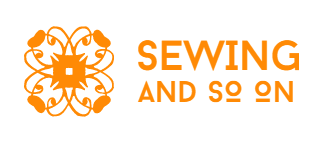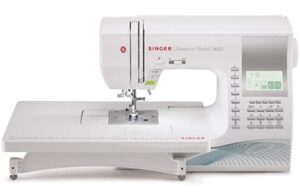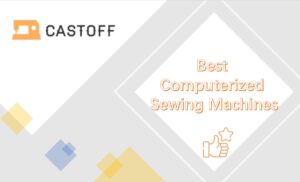 Confused by endless sorts of sewing machines? Our answer is pretty clear: it’s natural and necessary to have one computer-operated sewing machine in this digitalized world.
Confused by endless sorts of sewing machines? Our answer is pretty clear: it’s natural and necessary to have one computer-operated sewing machine in this digitalized world.
As a smart helper, this machine is easy to use and performs efficiently in clothes-making or -mending, especially fitting those who want to get started with sewing in no time and develop skills in the future.
Here are some of the quality computerized sewing machines we recommended and information about how to choose a perfect one.
Our Top Picks
1. Best for Beginners Featuring Necessary yet Versatile Functions: Brother CS6000i 2. Computer-like Combo with USB Port for Creative Designer: Brother SE600 3. Upgrade Pick Coming with an Incredible Amount of Accessories: Janome 3160QDC 4. Best for Sewing and Quilting with Durable Quilting Foot and Extension Table: JukiHZL-F600 5. Most Versatile Sewing Machine for Various Fabrics with 600 Stitches: Singer Quantum Stylist 9960
Types of Computerized Sewing Machines
You wanna sew, embroider, quilt or try them all? Based on the functions, there are mainly four types of computerized sewing machines: those that can only do sewing, embroidery, or quilting separately, and last but not the least, make a combo project as an all-rounder.
Sewing Machines
Computerized sewing machines, as the name suggests, connect two pieces of material or fix an accessory onto fabric, where a miniature computer controls the needle speed, thread tension, and stitch strength, or, you can switch to the manual mode and adjust the settings separately.
Embroidery machines
Embroidery machines operated by computer make drawing-like patterns with a distinguishable hoop on the machine arm which stretches the project tightly. These machines usually allow users to download other designs from the internet or inbuilt software for the most ideal customizing.
Quilting Machines
Digital quilting machines process quilts, cushions, and similar materials with filling and many layers.
All Rounder
Or you can buy an all-rounder such as Brother SE600 if you plan to learn more about sewing and want to try all functions. Nowadays, most sewing machines are designed as a jack of all trades but in a more skilled version, though not as good as industrial ones but more compact and simpler.
Some Features You Need to Know about
Before starting to choose a computerized sewing machine, there are several terms you need to be familiar with. What are these designs for?
Free Arm
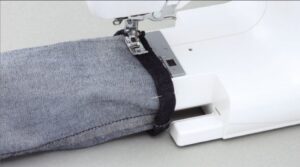
With a free arm, aka open arm, you can sew leggings or tight pant legs and sleeves by moving out a part of the machine arm (storage box) and slide your project onto the rest part.
This shouldn’t be a problem since most computerized sewing machines have adopted this design.
Extension Table
Yes, the machine arm allows itself to be not only reduced but also expanded to a wide table. A detachable table leaves sewers more room for making big projects like drapes, curtains, or quilts. Remember to take a look at the size of the table.
An oversized one, just like what Juki HZL- F600 has, comes in handy if you often process super large things.
LCD Screen
The screen shows the number of the selected stitch, its length, width, recommended presser foot based on your settings, and the current needle position. Some screens on high-end machines are touchable, colored, and with backlight, offering a more user-friendly operating experience.
LED Light
Lighting above the work area helps work in dimly-lit areas. Some products like Singer Quantum Stylist 9960 and Juki HZL- F600 are even equipped with 2 bulbs, making sewing at night suddenly twice as easy.
Movable Needle Position
There’s a button “Needle Up/Down” controlling where the needle stops every time- either up in the air or down under the fabric, while the needle on the machines without this button can only stop at the top. This function allows you to do unusual work like pivoting fabrics much easier.
Knee Lifter
This right-angle shank allows you to raise and lower the presser foot with your knee, while both of your hands hold the fiddly fabric.
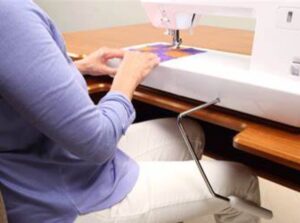
What to Look For in Computerized Sewing Machines?
It may seem intimidating when choosing a computerized sewing machine with all the bells and whistles. Especially so for a beginner, as the differences between many brands, features and price tags are to learn about, not to mention that some terms are barely understandable.
Here we have listed the most important things for you to consider and explain as plain and simple as a layman can follow.
Automatic Features
Automatic threader and cutter are time-savers even though they just do the smallest things for you. You can fill a bobbin in 60 seconds and thread this baby up in 10 seconds. Squinting is a thing of the past, and so is the flurry between switching and grabbing.
With the additional help of automatic speed and tension control, everything goes so well that you only need to focus on creative work and nothing else.
Stitches

A default feature in computerized sewing machines is no less than 30 stitches. Straight, zig-zag, chain, running, satin stitches are must-haves even for a beginner. Using these plus their combinations with different lengths and widths, you can create many kinds of variations.
Buttonhole Options
The same goes with buttonhole styles when deciding how many kinds of them you need to have. According to the most-used fabrics and buttons, at least 4 buttonholes you’re going to learn to sew.
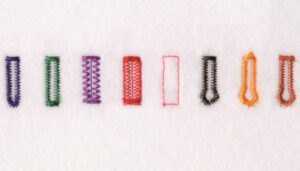
Fonts
Some advanced models also support sewing letters in 1-5 styles automatically. Those who like to customize their clothes by monogram should check if the stitches include alphanumeric font.
Presser Feet
3 basic presser feet you should make ready for sewing garments are zipper foot, overcast stitching foot, buttonhole foot. As for quilting: Walking Foot, spring action foot, and a 1/4” foot.
Presser feet are mostly included as accessories when you purchase a computerized sewing machine, but they can also be bought separately for $30-$50.
If you want to make the most use of your old presser feet, remember to check the compatibility with your new model, considering that they can either be interchangeable among brands or limited to specific brands.
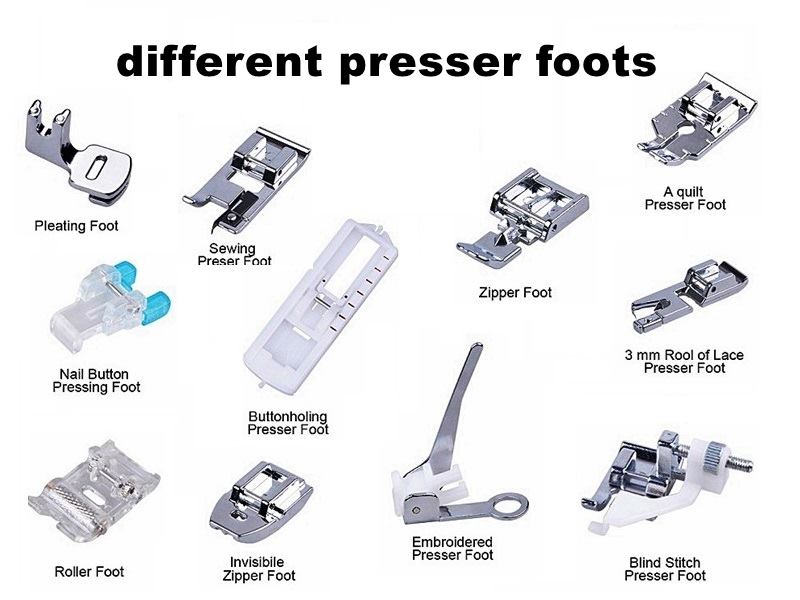
Budget
Computerized sewing machines range in prices under $150 to over $10,000. The thing is, how much should you spend on it and what is one with a great cost and quality ratio like? Here comes the answer.
$200-$300 is a general price range that the average falls into.
The basic computerized sewing machines under $200 usually cover 30-60 stitches and are built with plastic.
State-of-the-art machines over $300 come with all sorts of attachments, such as no less than 8 presser feet including those seldom-used, and can almost do anything automatically – from putting the thread through the eye of the needle at the beginning to cutting the thread after everything.
Size & Weight
The size and weight of the computerized sewing machine should come into consideration, if you plan to take your new machine to sewing classes or put it away in a closet after every use, instead of to a designated place.
The weight of the machines ranges from 12 lbs to over 20 lbs and even one pound counts on a long journey, in which case a hardcover is needed, too.
Warranty & Service
The warranty clause varies in length with different parts of the machine. For example:
25-year warranty for sewing machine head, 5-year warranty for electronic components, 1-year warranty for belts, rings detachments. Apart from that, you should figure out what the customer service covers to be sure where you can get after-sales maintenance, locally or through delivery.
Top 5 Computerized Sewing Machines Reviews
Now it’s time to show you the 5 computerized sewing machines we recommend the most, including the quality machines that are good at sewing, embroidery, quilting, or combo tasks. The No.1 is:
For Sewing and Quilting
1. Budget Pick: Brother CS6000i Computerized Machine for Sewing and Quilting
Features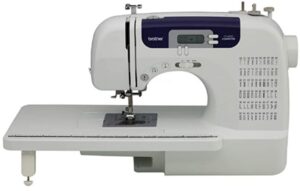
Type: sewing and quilting
High speed: up to 850 spm
Stitches: 60
Lightweight: 13 lbs
Pros
- Budget-friendly
- Easy to use
- Perfect for carry
- Adjustable speed control
Cons
- Light is not bright enough
- A 1/4″ quilting foot not included
It’s the best entry-level computerized machine for a beginner who is not ready to spend a lot of money. Throwing in a bunch of extra feet with all sorts of necessary but not too complicated features, Brother CS6000i is comparable with more expensive models.
Automatic speed control
Especially for kids also for any beginner, it’s good to be able to cap the speed so that you still won’t zoom out of control, even if your foot accidentally presses the pedal harder.
Quilt kit
The detachable wide table is exactly what a quilter needs for large projects, along with accessories for quilting: walking foot and spring action foot.
Easy to carry
It weighs only 13 pounds among other 16-pound counterparts and includes a hard machine case, making it a perfect traveling sewing machine.
The only possible downfall of the product is the fact that the light bulb isn’t bright enough when in a dark room. What we recommend is buying a clamp lamp as auxiliary lighting.
2. Most Reliable Quilter: Metal Framed Janome 3160QDC Computerized Sewing and Quilting Machine
Features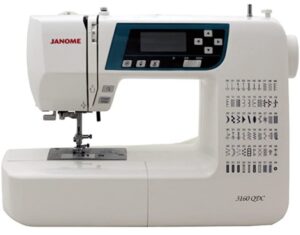
Type: sewing and quilting
Stitches: 60
Frame: metal
Accessories: hard case, extension table, quilt kit
Pros
- fully-prepared quilt kit
- sturdy also portable
Cons
- light should be brighter
If you are into quilting, this model is a must-have. It has a comprehensive quilt toolbox and aluminum alloy machine body which are designed for quilting tasks.
Die-cast aluminum frame
For quilting or processing heavyweight fabrics or multiple layers, a metal frame like Janome 3160QDC guarantees sturdy and reliable quilting, eliminating broke problems and making the machine durable. For the many years to come, you can rely on this machine to do your work nicely.
Specializing in quilting
Only a few quilting machines come with so many accessories for quilting as Janome 3160QDC does. It’s committed to quilting with a guide and a plethora of quilting feet such as 1/4″ foot and walking foot.
So, are there any downsides? Sure! This isn’t perfect for it may be too lightweight to do heavy-duty work. Sometimes it can shake slightly when the needle goes up and down at a high speed.
You might need a rubber grip mat to go under it if you do a lot of such work.
3. Premium Choice: Juki HZL-F600 Computerized Sewing and Quilting Machine
Features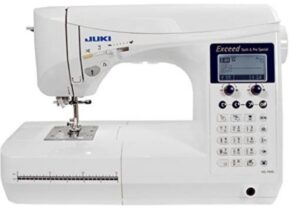
Type: sewing and quilting
High speed: up to 900 spm
Stitches: 255 (4 fonts)
Buttonhole styles: 16
Accessories:13 presser feet, hard case, knee lifter, extension table
Pros
- Wide sewing space
- Powerful & even feeding
- Stable
Cons
- Not great for portability
- Not budget-friendly
- A 1/4” quilting foot not included
Juki HZL- F600 is a state-of-the-art computerized sewing machine, for its reliable quality and advanced features. It will help bring an intermediate user’s sewing skills to the next level.
Box feed system
It aims at superior stitch quality for a variety of light to heavyweight fabrics, while the conventional feed mechanism is oval motion and can cause material’s shrinking and shifting. Only on Juki’s product can you find the exclusive box feed system, which is a unique selling point of this brand.
Oversized extension table (8″ wide x 12-1/4” long)
We bet you never see a wider table when compared to other machines in its class. Finishing a king-size quilt will be a breeze.
Automatic thread trimming by foot pedal
Have you ever thought of cutting a thread without your hands moving? Even on a machine that branded itself with an automatic thread cutter, you still need to press that button.
But with Juki HZL- F600, you can trim both needle and bobbin threads automatically by pressing the heel side of the foot controller, thereby concentrating on your project the whole time.
There are a couple of potential downsides. One of them is the daunting price. And the fancy features, which are worth spending so much, can be overwhelming for beginners.
For Sewing and Emboridery
4. Best for Embroidery Buffs: Brother SE600 with 3.2” Touchscreen and 4” x4” Hoop Area
Features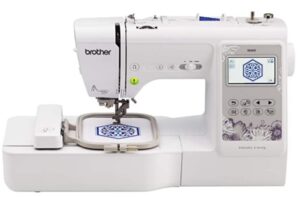
Type: sewing and embroidery
Stitches: 103 (6 fonts) + 80 embroidery designs
Lightweight: 11.82 lbs
Pros
- Large colored touchscreen
- Roomy embroidery field
- Support self-made or new designs downloaded online
Cons
- Software for embroidery not included
- Mediocre needle speed
This embroidery machine is filled with enhanced technology and multiple customizable features that streamline your sewing and embroidery.
Expandable designs
Operating just like a smart computer, it can memorize new designs that you have a crush on from the internet and turn them into reality, as soon as you transfer the files downloaded to the machine.
Diverse stitch pattern selection
The Brother SE600 computerized sewing and embroidery machine features 80 built-in designs and 103 stitches including 10 styles of auto-size buttonholes plus 6 alphanumeric fonts. We’re sure it would be hard for a sewer that has difficulty in making choices, with all these options to personalize your garments.
3.2″ LCD color touchscreen
The large 3.2″ color LCD touchscreen allows you to view embroidery designs in full color and preview your design edits before stitching. It also includes the ability to change individual thread colors, place lettering in an arc, move designs on the display with the touch of a finger.
However, everything comes at a price. And at this price, you can’t get embroidery software as a free bonus with the machine. If you want to try something new, you must purchase a program to either download new designs or convert self-made images to embroidery format.
All Rounder
5. Best Overall: Singer Quantum Stylist 9960 Heavy-Duty Computerized Sewing Machine Featuring Extension Table and Bonus Accessories
Features
Type: sewing and embroidery
High speed: up to 850 spm
Stitches: 600 (5 fonts)
Buttonhole styles: 13
Accessories:13 presser feet
- Good for custom designs
- Loads of accessories
- Great price/performance ratio
- Not great for portability
- Maybe too complicated for a beginner
With a total of 600 built-in stitches, this feature-packed Singer allows you to fulfill your creative dreams only if you are willing to invest your time and money to learn this customizable machine. There’s a pretty sharp learning curve when it comes to understanding how the machine works.
600 stitch options
One of the most significant selling points of the Singer Quantum Stylist 9960 Computerized Portable Sewing Machine is its stitch menu. By mirror imaging and stitch elongation, it can provide even more creative possibilities.
Back-lit LCD screen with adjustable brightness
Although nearly every computerized sewing machine has an LCD screen, don’t you think that a back-lit one will be a default feature in all machines, let alone a screen with adjustable brightness. In the dark, a screen without backlighting is equivalent to non-existent. This feature is very sweet, isn’t it?
Don’t get tricked by the word “portable” in the item’s name here, it’s not comparable with the real portable ones, which weigh mostly less than 16 lbs. Maybe for a machine that can sew so many stitches and can quilt in the meantime, it’s rather lightweight.
Computerized Sewing Machine Brands
The best-known computerized sewing machines are mainly made by American, Japanese, and Swiss companies. Here are 5 famous brands (listed in alphabetic order) you should be aware of.
◊BERNINA
Bernina is a make based in Switzerland and stands for excellent quality and durability. Coming with these reassuring good features, the high price indicates that this company mostly sells high-end models.
For a machine that lasts for a lifetime, the money will eventually pay you in return. Its domestic sewing machines are named “Bernette”, a sub-brand.
Price Range: $400-$2000
Hottest Models: Bernette B37, Bernette B38
◊BROTHER
Brother origins in Japan, though the name may sound very American. It has the biggest market share with its various machines ranging from the simple entry level to high technology, from computerized sewing machines to sergers.
Sewing novices can find a wide selection of Brother computerized sewing machines that cover the basics at a reasonable price.
Price Range: $150-$750
Hottest Models: CS6000i, CS5055PRW, HC1850
◊JANOME
Janome was founded in Japan as well, starting out by manufacturing industrial mechanical sewing machines. The exclusive superior plus feed system on its high-end machines ensures smooth and stable feeding, eliminating skipped or uneven stitches. Janome is a reliable helper for those who lay emphasis on every detail like a professional sewist.
Price Range: $400-$1500
Hottest Models: 7330 magnolia, 3160QDC, 4120QDC
◊JUKI
The third Japanese brand is Juki, which also has a big market share in the world. It is the industrial sewing machines that made this make outstanding in the early times.
An exclusive feature of its machines is the box feeding system, which improves stitch quality a lot, compared to the common oval feeding mechanism.
Price Range: $300-$1400
Hottest Models: HZL-F600, HZL-F300
◊SINGER
Singer is an American make which is the first home sewing machine producer. The functions and quality of the machine differ as there is a wide range to choose from. There are only several computerized sewing machines of Singer on sale, as it is dedicated to mechanical heavy-duty sewing machines. Among the limited models, you can still find something brilliant with great quality to cost ratio.
Price Range: $150-$450
Hottest Models: 7258, Quantum Stylist 9960
Is a Computerized Sewing Machine Better than Mechanical?
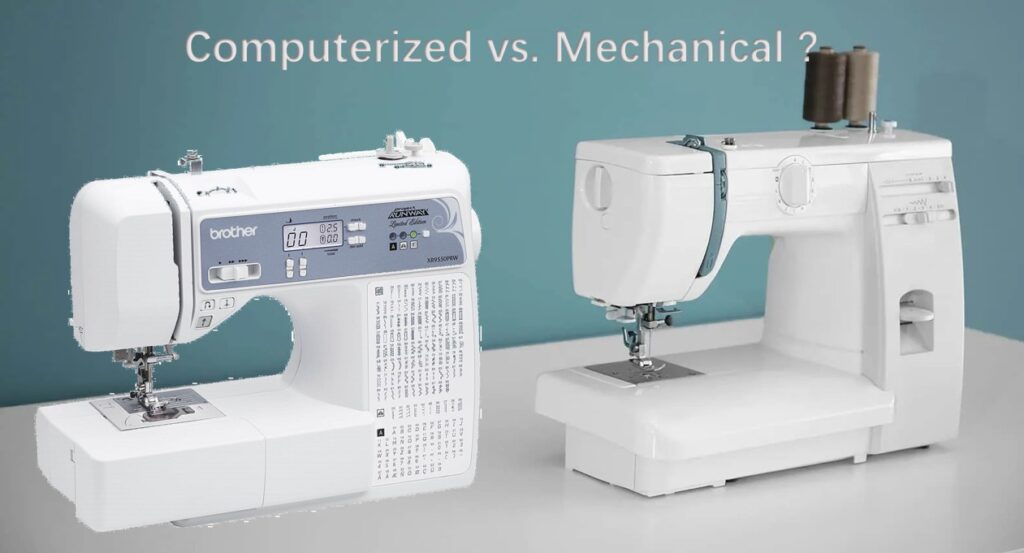
It’s up to your current skill level and purpose for the future, whether you need a computerized sewing machine. To decide, you should know the detail about the utility, function, and features of both types and which suits what kind of users.
Mechanical Sewing Machines
If you are new to sewing and want to just sit down and get started with it, a mechanical sewing machine is good enough for your purpose. It’s also for a user that only does the basic sewing because no one would want to buy a machine with loads of features that he/she only uses once a year.
Computerized Sewing Machines
A computerized sewing machine, which improves or adds in some way to the computerization, might be the one for those who plan to expand their skillset and always keen on something new.
Mechanical vs. Computerized
Features and Options
One of the main differences between them lies in the exterior look. Mechanical sewing machines come with dials and knobs, while computer ones with buttons and an LCD screen.
Computerized sewing machines feature a large number of preset stitches and fancy automatic functions like speed control, tension adjustment, and threading, in contrast with the limited stitching types on mechanical counterparts. These features give you more room for creation by saving your time by setting you free from those repeated dull work.
Simplicity
With the simplest sewing machine type, a mechanical one, you’re able to sew right away as long as you know the basics about what it is. Maybe this is why senior citizens love it.
In comparison, computerized sewing machines are not that easy to begin with. There’s a high learning curve since it has so many features.
Longevity
Mechanical ones, as the name describes, have nothing to do with electronics. That means, it’s easier to maintain. As long as you clean and oil it regularly, it will possibly run forever.
A computerized machine lasts a shorter time compared with a mechanical one, as it has tons of electronic components. A computerized machine lasts 15 to 20 years on average.
Price
To get the same project done, a computerized sewing machine will cost you $50-$100 more than a mechanical one. If on a budget, you’d better buy a mechanical one.
Which to Choose?
A mechanical one will do simple tasks just fine. On the other hand, if you plan to do something complicated including embroidery or quilting, a computer-controlled machine would serve you well, as a smart helper who makes the settings and adjustments automatically always and forever.
For Home Use or Industrial Use?
Domestic models are suitable for sewing hobbyist to mend and furbish clothes or make home décor. With the help of many automatic features, it’s compact and easy to use. Some of this kind incorporates multiple functions like sewing, embroidery, quilting at a relatively low price.
An industrial machine is normally larger and dedicated to one specific usage, so it’s an option for a tailor, designer, or home sewist who has a special room for this big tool and likes to sit in front of a sewing table all the time. It costs a lot more, up to several thousand dollars.
In this buying guide, we only talk about the machines for home use, not those for industrial, considering that most of you are looking for a gift for yourselves or your beloved ones, instead of for a company or a workshop.
How to Maintain a Computerized Sewing Machine?
Even for a computerized sewing machine, it needs cleaning and oiling every now and then. Otherwise, it may sound like a thrashing machine one day and all sorts of problems keep popping up.
There is something basic you can do by yourself even if you are a layman. As for some services that can only be done after your machine is dissembled, you need to take it to the local repair department.
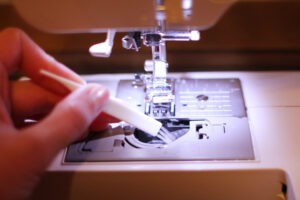
Home Maintenance
Cleaning
After 2-3 bobbins, it’s advisable to remove the lint with the brush coming with the machine, as some threads and fabrics are linty and can cause bobbin jamming or uneven stitches if not cleaned out.
Oiling
Not all computerized sewing machines need oiling. You need to read the manual or check if the package includes oil. Before oiling the moving parts, the old oil should be removed.
Storage
When put away for a long time, the machine needs a dust cover and to be stored at room temperature.
Professional Service
The money you saved is either for a professional check or the next machine. Don’t be mean on this part. If you serve your machine well, we’re sure that it will serve you as well and pay you in return, one way or another. You should take it to the local repair department once a year before something serious actually happens.
FAQs:
Conclusion
So are the 5 computerized sewing machines that we find the best after taking the buyers’ opinions on different websites into consideration. They come in a wide range of prices and features. If you are an embroiderer or quilter, go straight away to Brother SE600 and Janome 3160QDC.
If you need a machine that can do various work and tackle multiple fabrics, we give you JukiHZL-F600, which we like the most. Those innovative and thoughtful features make it outstanding and show the profession of the manufacturer.
If on a tight budget, Brother CS6000i would be a good choice, especially for a beginner, as it covers the most-used features at such an affordable price.
